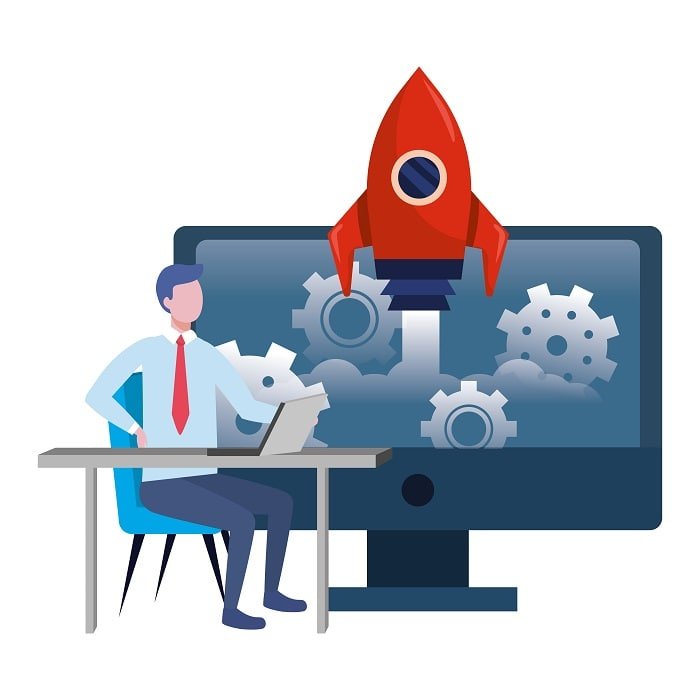
The integration of Artificial Intelligence (AI) into the business landscape is transforming how companies operate across the globe. As AI technologies evolve, understanding their potential and implementation strategies becomes essential for any organization aiming to stay competitive. This guide will delve into the fundamentals of AI, explore its various applications in business, and outline actionable steps for businesses to harness the power of this transformative technology.
Understanding Artificial Artificial Intelligence
What is AI?
Artificial Intelligence, at its core, involves machines performing tasks that typically require human intelligence. These tasks include reasoning, problem-solving, understanding language, and recognizing patterns. AI encompasses several key components:
- Machine Learning (ML): Enables systems to learn and improve from experience without being explicitly programmed.
- Deep Learning: A subset of ML that uses neural networks with three or more layers.
- Natural Language Processing (NLP): Allows machines to understand and interpret human language.
How AI Works
The foundation of AI lies in its algorithms, data, and computing power:
- Algorithms: Step-by-step computational procedures for data processing and automated reasoning.
- Data: The fuel for AI, large volumes of data are necessary to train AI models.
- Computing Power: Significant processing power is required to handle complex AI computations.
Types of AI
- Narrow AI: Specialized in one task, such as facial recognition or internet searches.
- General AI: Theories of AI systems with wide-ranging cognitive abilities.
- Artificial Superintelligence (ASI): Hypothetical AI that surpasses human intelligence across all aspects.
Real-World Applications
AI is changing industries by enhancing efficiency, reducing human error, and unlocking new capabilities:
- Healthcare: Diagnosing diseases faster and more accurately.
- Finance: Automating risk assessments and customer service.
- Retail: Personalizing customer experiences.
- Manufacturing: Optimizing production lines and predictive maintenance.
The Potential of AI in Business
Growing Adoption
Businesses across sectors are increasingly implementing AI, driven by its potential to significantly enhance productivity and decision-making.
Key Business Functions
AI can be applied in various domains within business:
- Operations: Streamlining processes through automation.
- Marketing: Enhancing customer engagement through personalized marketing.
- Customer Service: Automating responses and support with chatbots.
- Finance: Providing insights for better financial decision-making.
Benefits and Challenges
Implementing AI can lead to:
- Improved Efficiency: Automating routine tasks frees up resources for strategic activities.
- Enhanced Decision-Making: AI’s data analysis capabilities enable more informed decisions.
- Increased Competitiveness: Businesses that adopt AI can stay ahead of market trends.
However, challenges such as data quality, ethical concerns, and a talent shortage must be addressed to fully leverage AI benefits.
Assessing Your Business Readiness for AI
Evaluating Data Infrastructure
Understanding your current data management practices is crucial as AI systems require high-quality data to function effectively.
AI Maturity Assessment
Identifying skill gaps and resource constraints will help tailor your AI strategy to your organization’s capabilities.
Identifying Use Cases
Focus on specific business problems where AI can have a measurable impact to maximize value from your investments.
Considering Risks
Address potential ethical implications and ensure your AI solutions comply with relevant regulations.
Developing an AI Implementation Strategy
Setting Objectives
Clearly define what you aim to achieve with AI, aligning your objectives with overall business goals.
Choosing the Right Technologies
Select AI tools and platforms that best meet your specific needs—consider factors like scalability, usability, and integration capabilities.
Roadmap Creation
Develop a detailed plan that includes key milestones, timelines, and required resources to guide your AI implementation.
Governance Framework
Establish protocols to manage AI projects effectively, ensuring they adhere to ethical standards and business objectives.
Building the Necessary Infrastructure
Data Infrastructure
Ensure your infrastructure can support AI by upgrading hardware and optimizing software configurations.
Cloud-Based Platforms
Implement scalable and secure cloud solutions to host your AI systems, providing flexibility and accessibility.
Integration
Seamlessly integrate AI tools with existing business systems to enhance data flow and utility.
Data Security
Prioritize data security and privacy to protect sensitive information and maintain trust with stakeholders.
Upskilling Your Workforce
Identifying Skills Needs
Assess the AI-related competencies required across your organization and implement training programs to address gaps.
Training and Development
Offer continuous learning opportunities to keep your workforce abreast of AI trends and technologies.
Fostering Innovation
Create a culture that encourages experimentation and innovation to support AI adoption.
Managing Change
Prepare for organizational changes and address any workforce concerns related to AI integration.
Implementing and Monitoring AI-Powered Solutions
Deployment
Introduce AI solutions gradually to manage risks and fine-tune systems based on real-world performance.
Performance Monitoring
Regularly assess the effectiveness of AI implementations and make adjustments based on analytical findings.
Strategy Refinement
Use insights gained from ongoing evaluations to refine your AI strategies and achieve better outcomes.
Success Measurement
Develop metrics to quantify the success of your AI initiatives and communicate these benefits to stakeholders.
Conclusion
Embracing AI in business requires a strategic approach and careful planning, but the potential benefits are substantial. By understanding AI’s capabilities and integrating them thoughtfully, your business can enhance operational efficiency, improve decision-making, and maintain a competitive edge in the digital age. Start your AI journey today and harness the power of this groundbreaking technology.















































